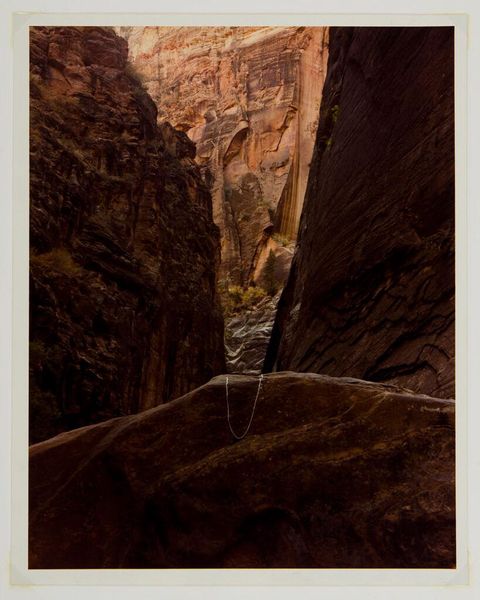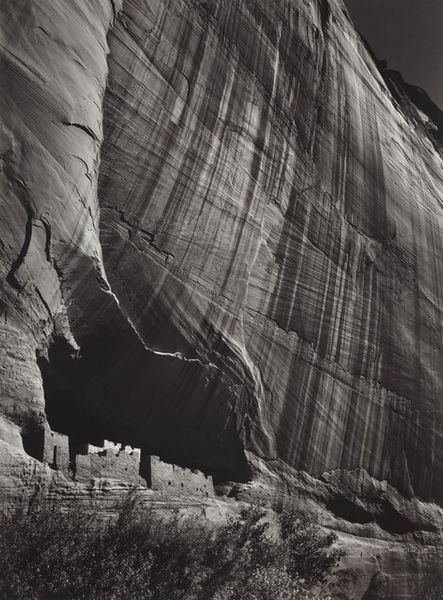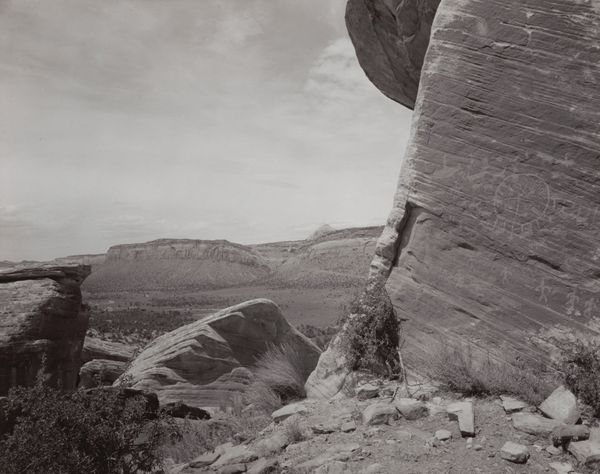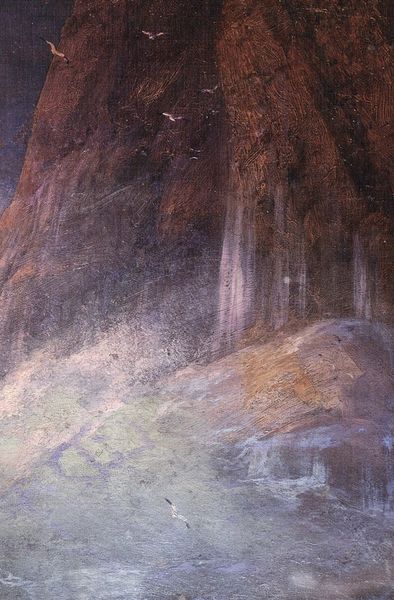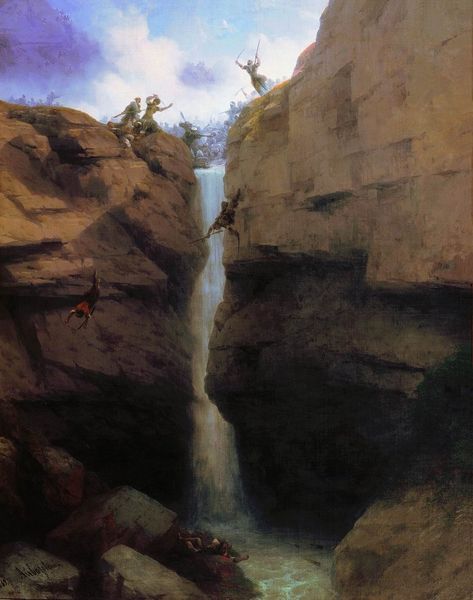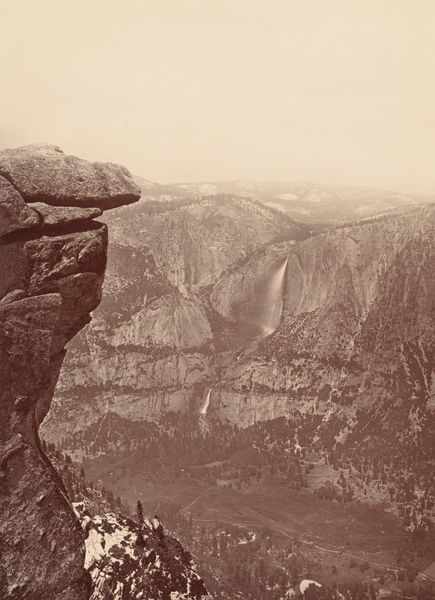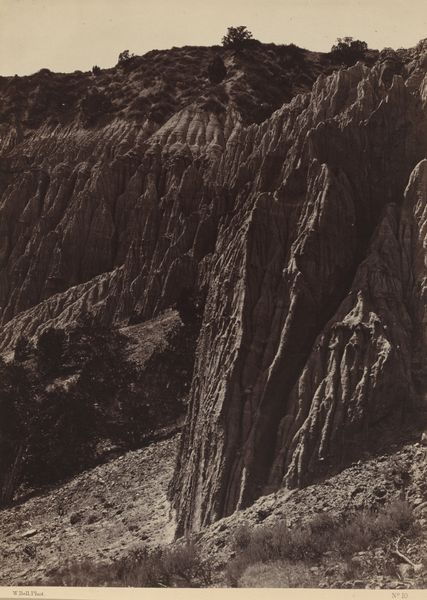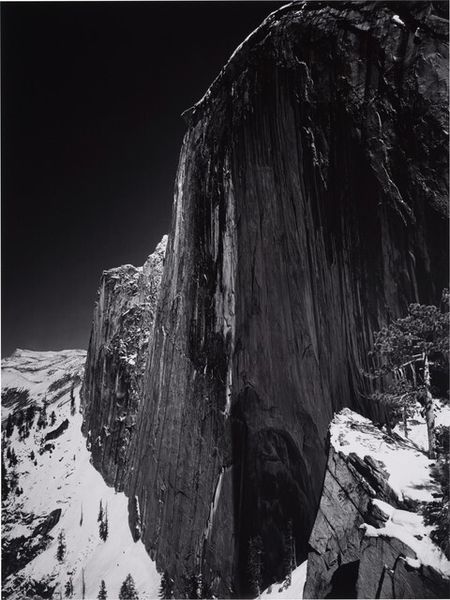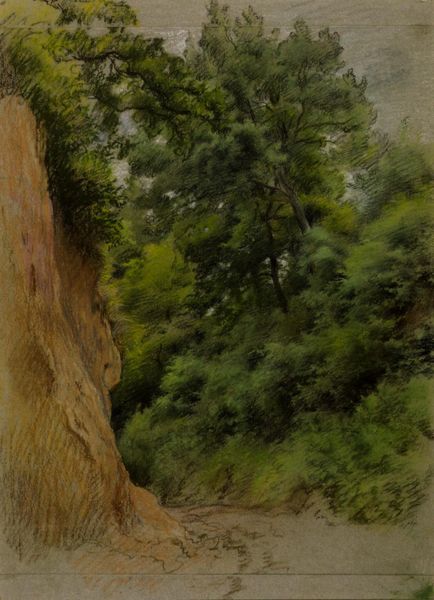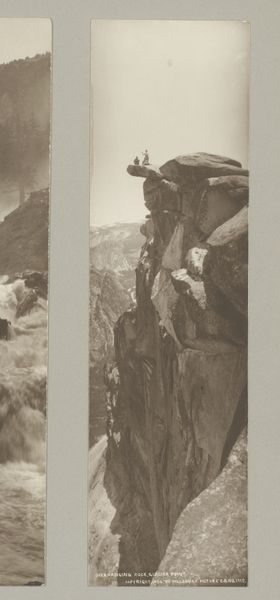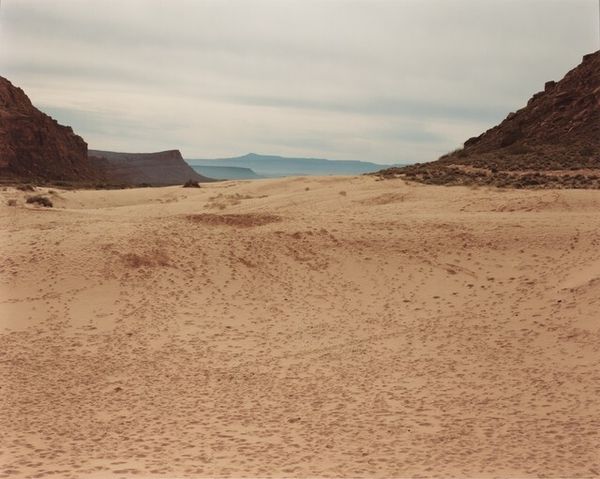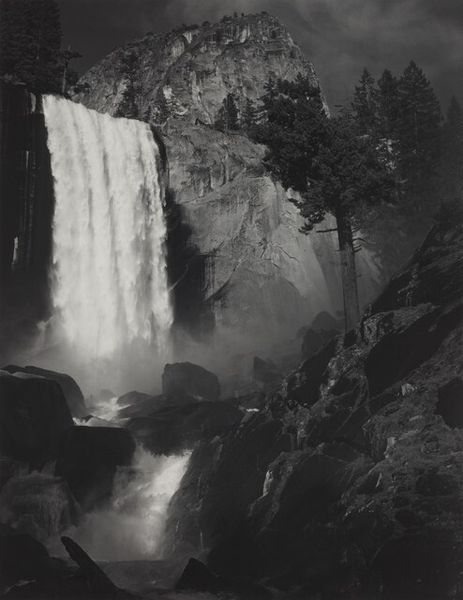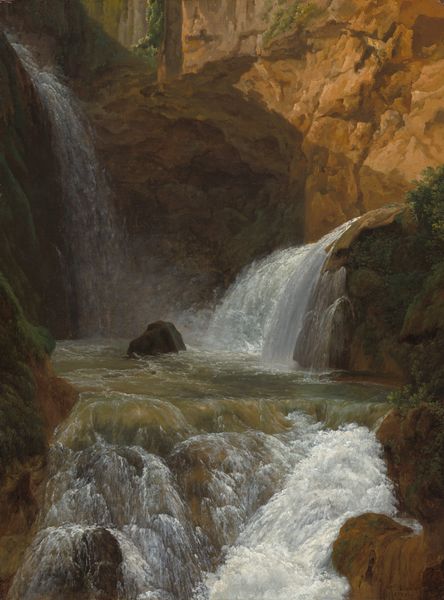
c-print, photography
#
landscape
#
c-print
#
nature
#
photography
#
environmental-art
#
landscape photography
#
realism
Dimensions: image: 24.1 x 19 cm (9 1/2 x 7 1/2 in.)
Copyright: National Gallery of Art: CC0 1.0
Curator: Looking at John Pfahl's "Altered Landscape: Canyon Point, Zion National Park, Utah" from 1977, a chromogenic print, my first thought is: what a beautifully unsettling composition. It almost feels like a stage set. Editor: The rock in the foreground really anchors it. What grabs me, though, is the tension between the stark, geological reality of the canyon and the single, rather fragile string placed across the rock face. It feels…symbolic, burdened. Curator: Burdened, yes, but in what context? Pfahl was deeply involved in questioning the Romantic tradition of landscape photography, wasn't he? That unadulterated, sublime view? This piece challenges that head-on. Editor: Exactly. Think about the string as a modern addition to nature. Not an improvement necessarily, but rather something that questions the idea of "untouched" landscape. It could be about mankind’s fragile influence in geologic time. Is the symbol about progress, meddling, or something else? Curator: Precisely. Environmental art of that era was rarely just pretty pictures of nature. It’s crucial to see this as part of a larger societal debate happening in the 70s. The clean lines and precise placement of that string, they smack of governmental survey lines. Are we dividing up what should not be divided? Editor: I am so drawn to the fact that the string looks precarious. You mentioned survey lines, but it also strikes me as the sword of Damocles – that there's potential for environmental catastrophe. The canyon walls could collapse any second. Curator: And the museum itself… it changes the context yet again. When these works become part of institutions, are they then somehow neutered? Stripped of their activist bite? Or do museums amplify these concerns, providing a bigger platform for such issues? Editor: A very good point. Ultimately, perhaps, what this image communicates depends more on what we bring to it – our anxieties, our hopes – rather than on what Pfahl intended. Curator: I would agree completely. A photo that doesn’t settle, but unsettles—offering so much on first impression, and continuing to pose complex issues.
Comments
No comments
Be the first to comment and join the conversation on the ultimate creative platform.
